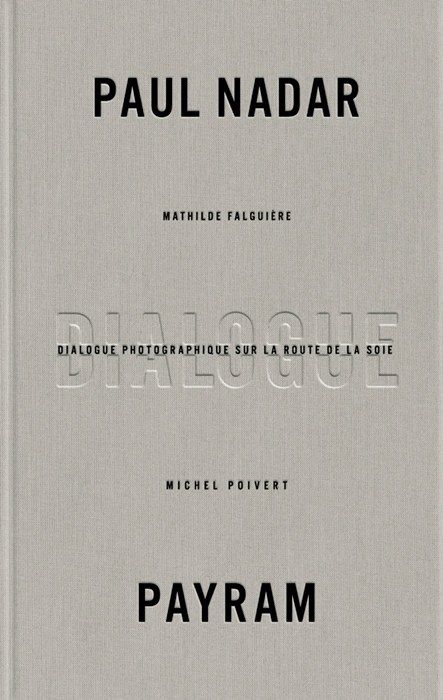[Fall 2022]
By Claudia Polledri
Dialogue photographique sur la Route de la soie
Nadar/Payram
Paris, Éditions Le bec en l’air, 2021, 112 p
[Excerpt]
One book, two trajectories, a single “road” and photography: Dialogue photographique sur la Route de la soie is a surprising voyage through space, time, and the history of photography. Iranian photographer Payram constructed it by juxtaposing his pictures, taken during numerous trips to Central Asia, against the legendary ones taken by French photographer Paul Nadar in those same places more than a century before, in 1891. Between their two journeys, practically everything has changed: the names for this geographic space, the political framework, the architecture, the landscapes. And so, photography becomes the space of encounter that connects these trajectories, close and distant at the same time, well beyond their geographic superimposition. It was only once his project was underway that Payram discovered and got to know Nadar, who would become his travelling companion. Payram’s goal was not to walk in Nadar’s footsteps – geographic or visual – but to find his own path. And yet, there is truly a dialogue between them, in the form of a simple and original book, elegantly sustaining the very possibility of this exchange: two juxtaposed photo albums bound one below the other, so they can both be consulted at the same time. It’s up to readers/viewers to alternate between the two and construct their own journey.
1891: It isn’t clear why Nadar left his studio on Rue d’Anjou to travel to Turkestan.1 Certainly, colonial expansion, diplomatic ties between France and Russia, and the growing interest in illustrated travel accounts, as well as encounters with explorers who visited his studio, offered fertile ground for the conception and realization of this project. Nadar’s correspondence during his trip, as well as the images themselves, many of which are clearly devoted to the Trans-Caspian Railway – stretching more than two thousand kilometres – indicate that he had been mandated to document the evolution of its construction and its main technical innovations. He made a round trip between Paris and Samarkand, Uzbekistan, via Constantinople, the Black Sea, the Caspian Sea, and then Baku, Tiflis, Bukhara, Merv, and other places: for three months, he travelled free of charge on Russian trains with a photographic arsenal that was considerable – and innovative for the time. In addition to his traditional 30 x 40 large-format camera, with its monopod and a stock of gelatin bromide silver glass plates, he carried his Express-Détective-Nadar camera, with Eastman lm canisters, and a Kodak No. 2. Their use was reflected in the types of images he brought back…
Claudia Polledri is a postdoctoral researcher in the Department of Art History and Film Studies at the Université de Montréal, where she earned a doctorate in comparative literature devoted to photographic representations of Beirut (1982–2011). An expert in contemporary photography in the Middle East, she was curator of the exhibition Iran. Poésies visuelles, presented in Quebec in 2019.
[ Complete issue, in print and digital version, available here: Ciel variable 121 – WANDERINGS ]
[ Complete article and more images, in digital version, available here: Dialogue photographique sur la Route de la soie — Claudia Polledri ]

